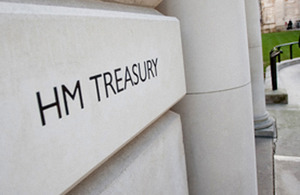2017: New quid on the block
The countdown to the historic new £1 coin officially begins today, as Chief Secretary David Gauke reveals it will enter circulation on 28 March 2017.

With three months to go, the government is launching a campaign to help raise awareness and encourage the public to return the round £1 coins.
This is the first time the £1 coin has been introduced in over 30 years. Around £1.3 billion worth of coins are stored in savings jars across the country, and the current £1 coin accounts for almost a third of these. Therefore it is important that all round £1 coins are returned before 15 October 2017 when they lose their legal tender status.
The new 12-sided £1 will be the most secure coin in the world. It boasts several new security features, including a hologram, to prevent counterfeits, which cost taxpayers and businesses millions every year.
Chief Secretary to the Treasury David Gauke said:
March 28 should be an important date in everybody’s calendar this year - as we will have a new quid on the block.
This is a historic moment as it’s the first time we’ve introduced a new £1 coin since 1983, and this one will be harder to counterfeit than ever before.
Our message is clear: if you have a round one pound coin sitting at home or in your wallet, you need to spend it or return it to your bank before 15 October.
Helen Dickinson OBE, CEO of the British Retail Consortium, said:
Through the British Retail Consortium, most major UK retailers have been engaged in discussions and planning with the Royal Mint and Her Majesty’s Treasury since the March 2014 announcement that a new pound coin would be introduced in 2017.
Our aim is to ensure that the implementation of the new coin runs as smoothly as possible for our customers and staff. Our combined input into the project means we’re confident the new coin will address the issue of counterfeit coins for businesses and the general public alike, and will prove highly secure for customers to use.
While there will be a natural transition period where some vending systems may only be able to accept the existing pound coin, our industry is committed to ensuring we’re fully prepared ahead of the launch in March.
Association of Convenience Stories Chief Executive, James Lowman, said:
The introduction of a new £1 coin is a positive step toward taking counterfeit coins out of circulation.
It is essential that retailers are prepared for the introduction of the new £1 coin, as the transition is likely to affect a number of areas of their business especially if they have coin operated machines such as self-service tills in store.
We encourage retailers to make use of the guidance provided by the Royal Mint and to speak to their suppliers of coin operated machines as soon as possible to make the transition as smooth as possible for consumers.
Here are 12 interesting little-known facts about the pound coin.
Did you know?
- the Royal Mint has produced over 2.2 billion round pound coins since 1983 – that’s the same weight as nearly 6,000 elephants
- 25 different designs have appeared on the current pound coin from dragons to trees
- the Royal Mint will make over 1.5 billion of the new £1 coins
- if you put these coins side by side, there would be enough to go from the UK to New Zealand and back
- the new £1 coin is based on the design of the old 12-sided three-penny bit, a popular British coin which went out of circulation in 1971
- it is being made at the Royal Mint in Llantrisant, Wales, at a rate of up to 2,000 each minute
- this equates to more than 30 coins every single second and nearly 3 million new £1 coins per day
- some of the round £1 coins returned by the public will be melted down and reused to make the new £1 coin
- the oldest British coins in the Royal Mint’s collection dates back over 2,000 years
- some coins produced by the Royal Mint are tested every year to ensure they meet the correct specifications at the ‘Trial of the Pyx’, a judicial ceremony which dates back to the twelfth century
- 2017 will be the first time the new £1 coin goes to trial
- the Chancellor is the UK’s official “Master of the Mint” – a title previously held by Isaac Newton